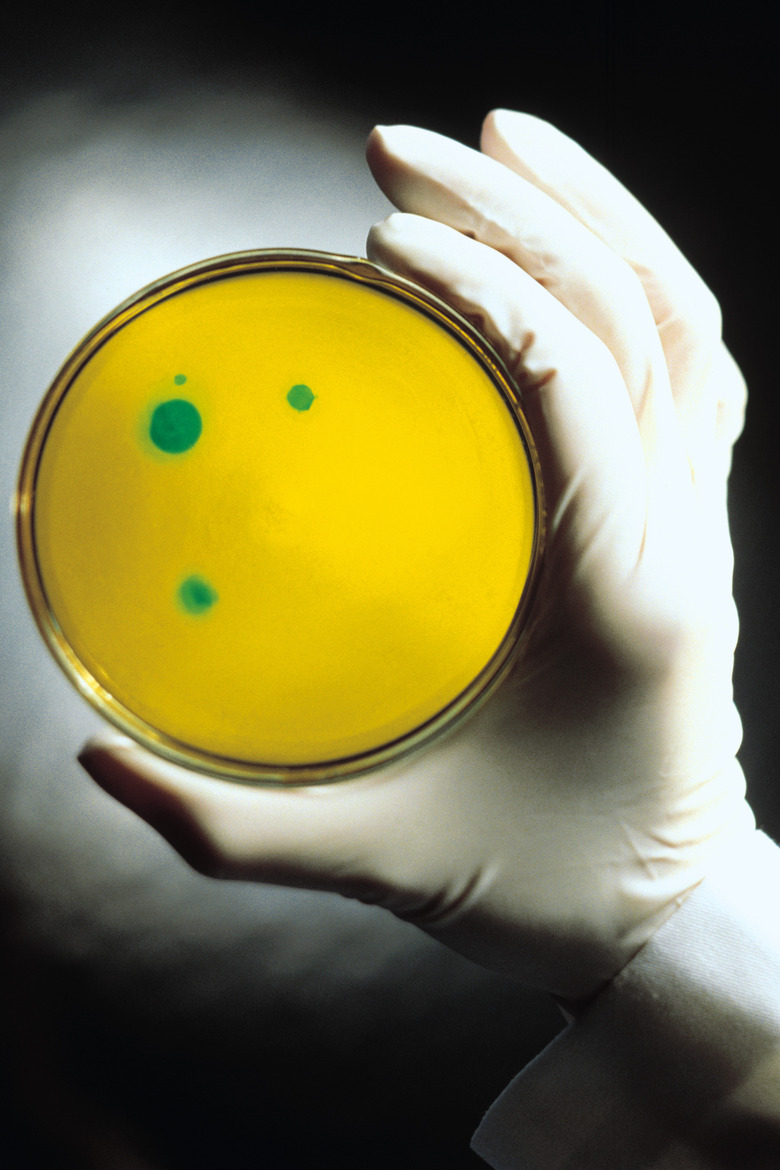The Production Of Recombinant Human Growth Hormones By Recombinant DNA Technology
Produced by the pituitary gland, human growth hormone (HGH) is essential for proper growth in children. Some children, however, have disorders that cause reduced HGH levels. If children go without treatment, they mature as unusually short adults. This condition is treated by administering HGH, which today is produced by using recombinant DNA (rDNA) technology.
Recombinant DNA
Recombinant DNA
Scientists use rDNA technology, a group of techniques that isolate genes (specific pieces of DNA), attach them to other pieces of DNA and transfer the newly combined genetic material to another species such as bacteria. Sometimes called genetic engineering, rDNA technology is a relatively recent invention that dates to the 1970s. Insulin was the first protein produced using rDNA methods.
Pituitary Glands
Pituitary Glands
HGH is a protein, and like all proteins, it's made from a chain of amino acid subunits. (In the case of HGH, the protein is roughly 190 amino acids long.) Before the invention of rDNA technology, HGH could only be produced laboriously by isolating it from pituitary gland tissue taken from human cadavers.
This process was inefficient, expensive and sometimes unsafe. For example, the resulting HGH product occasionally contained contaminants from cadaver tissues. Rarely, patients injected with HGH from cadavers developed Creutzfeld-Jakob disease, a very serious human version of mad cow disease. Infection is caused by proteins called prions. By eliminating the need for human tissue, rDNA technology avoids these and other potential contamination problems.
Isolation
Isolation
Genes like the one for HGH contain coded instructions for protein production. Inside cells, this information is first re-coded from DNA, which provides long-term information storage, to a messenger RNA (mRNA) molecule, which provides specific instructions for HGH protein production.
Scientists begin by taking pituitary gland tissue and isolating the mRNA encoded by the HGH gene. Next, they used the mRNA as a template to create complementary DNA (cDNA). This DNA contains the coded instructions for making the HGH protein.
Transfer and Production
Transfer and Production
After scientists create the cDNA, they add it to a plasmid, a small loop of DNA taken from a bacterial cell. Next, they insert the plasmid into bacteria. When the bacteria are grown in culture, the cells use the transferred HGH gene to produce and isolate HGH much more quickly and with less effort and expense than was possible with human pituitary gland tissue. And, because the protein is produced by bacteria, contamination by components of cadaver tissue is not possible.
Cite This Article
MLA
Brennan, John. "The Production Of Recombinant Human Growth Hormones By Recombinant DNA Technology" sciencing.com, https://www.sciencing.com/production-recombinant-human-growth-hormones-recombinant-dna-technology-2230/. 13 March 2018.
APA
Brennan, John. (2018, March 13). The Production Of Recombinant Human Growth Hormones By Recombinant DNA Technology. sciencing.com. Retrieved from https://www.sciencing.com/production-recombinant-human-growth-hormones-recombinant-dna-technology-2230/
Chicago
Brennan, John. The Production Of Recombinant Human Growth Hormones By Recombinant DNA Technology last modified March 24, 2022. https://www.sciencing.com/production-recombinant-human-growth-hormones-recombinant-dna-technology-2230/
